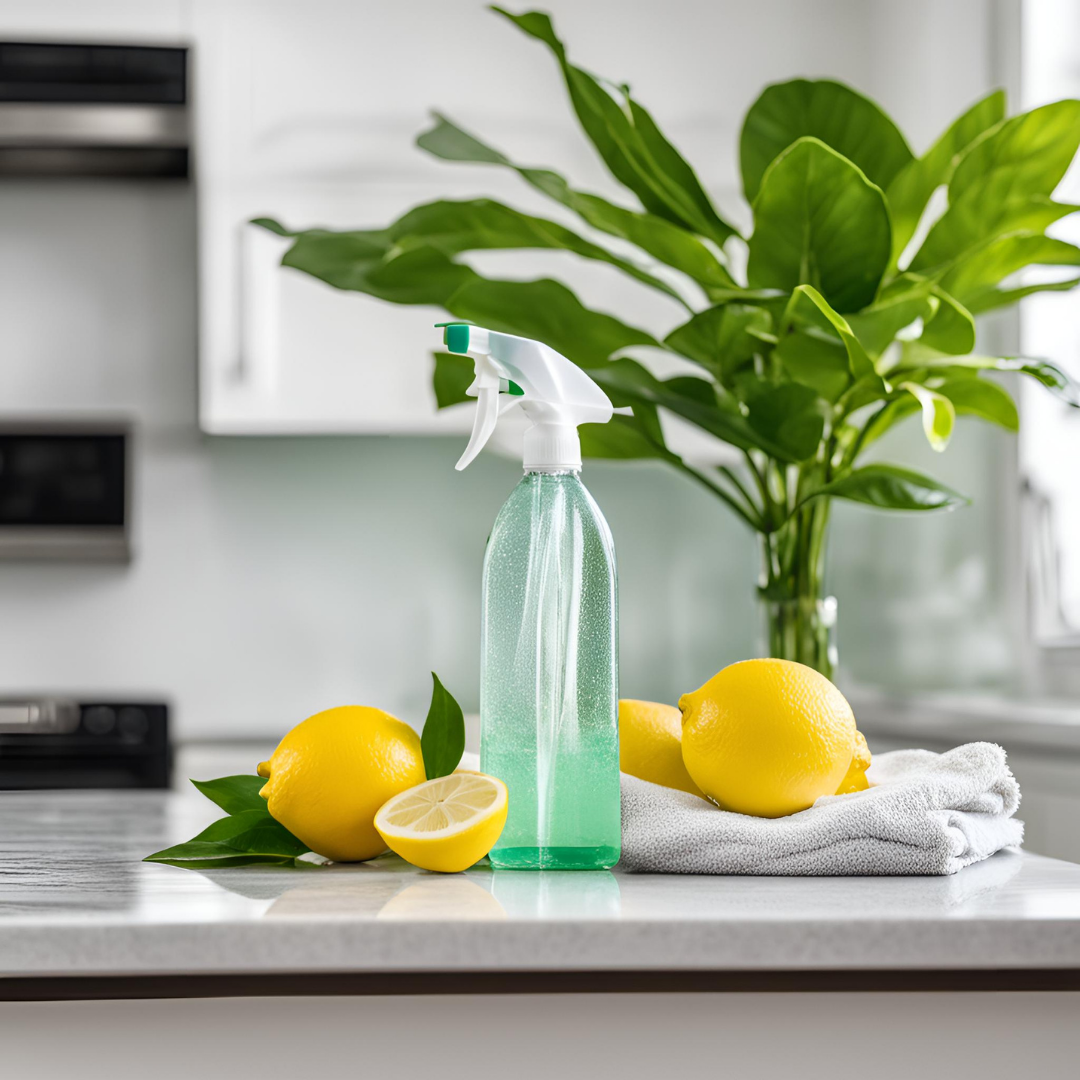In an era where environmental consciousness is paramount, the way we clean our homes has come under scrutiny. Traditional cleaning products, often laden with harsh chemicals, not only pose risks to our health but also contribute to environmental degradation. This article explores the world of eco-friendly cleaning, offering natural solutions for maintaining a spotless home while embracing green living and sustainability. By adopting these non-toxic alternatives, we can create a safer living space and contribute to a healthier planet.
The Importance of Eco-Friendly Cleaning
The shift towards eco-friendly cleaning is more than just a trend; it’s a necessary step in sustainable living. Conventional cleaning products contain volatile organic compounds (VOCs) and other harmful chemicals that can affect indoor air quality and contribute to various health issues. Moreover, these products often come in single-use plastic containers, exacerbating the global plastic waste crisis.
Eco-friendly cleaning solutions offer numerous benefits:
- Health: Natural cleaning products reduce exposure to toxic chemicals, potentially decreasing the risk of allergies, respiratory issues, and skin irritations.
- Environmental Impact: Green cleaning methods minimize water pollution and reduce the carbon footprint associated with manufacturing and disposing of harsh chemicals.
- Cost-Effectiveness: Many natural cleaning solutions can be made from inexpensive, readily available ingredients, saving money in the long run.
- Versatility: Eco-friendly cleaners are often multi-purpose, reducing the need for multiple specialized products.
By embracing these natural solutions, we contribute to a more sustainable lifestyle and a cleaner, healthier home environment.
Natural Cleaning Ingredients
1. Vinegar: The All-Purpose Wonder
White vinegar is a powerhouse in eco-friendly cleaning. Its acetic acid content makes it effective against many types of bacteria and mold. Use it to:
- Clean windows and mirrors for a streak-free shine
- Descale kettles and coffee makers
- Remove soap scum from bathroom fixtures
Mix equal parts water and vinegar in a spray bottle for an all-purpose cleaner. For tough jobs, use undiluted vinegar.
2. Baking Soda: The Gentle Abrasive
Baking soda’s mild abrasive properties make it perfect for scrubbing without scratching surfaces. It also neutralizes odors effectively. Use it to:
- Clean sinks and bathtubs
- Deodorize carpets and upholstery
- Scrub pots and pans
Make a paste with water for tougher cleaning tasks, or sprinkle it directly on surfaces before scrubbing.
3. Lemon: Nature’s Disinfectant
Lemons contain citric acid, which has antibacterial and antiseptic properties. They also leave a fresh, natural scent. Use lemons to:
- Clean and deodorize cutting boards
- Remove soap scum and hard water stains
- Brighten and whiten laundry
Squeeze fresh lemon juice into cleaning solutions or use lemon peels to scrub surfaces.
4. Essential Oils: Natural Fragrance and More
Essential oils not only add pleasant scents to your homemade cleaners but also possess antimicrobial properties. Popular choices include:
- Tea tree oil for its antifungal properties
- Lavender oil for its calming scent and antibacterial qualities
- Eucalyptus oil for its disinfectant properties
Add a few drops to your homemade cleaning solutions for added cleaning power and a natural fragrance.
5. Castile Soap: The Versatile Cleaner
Made from vegetable oils, castile soap is biodegradable and non-toxic. It’s effective for:
- General cleaning of surfaces
- Washing dishes
- Laundry
Dilute castile soap with water for most cleaning tasks, or use it full-strength for tougher jobs.
6. Hydrogen Peroxide: The Natural Bleach Alternative
A safer alternative to chlorine bleach, hydrogen peroxide is effective for:
- Whitening grout
- Disinfecting surfaces
- Removing stains from fabrics
Use a 3% solution for most cleaning tasks, but always test on an inconspicuous area first.
7. Olive Oil: The Natural Wood Polish
For a non-toxic way to clean and polish wood surfaces, olive oil is an excellent choice. Mix it with a bit of lemon juice for added cleaning power and a fresh scent.
8. Salt: The Natural Scrubber
Coarse salt acts as an effective, natural abrasive for tough cleaning jobs. Use it to:
- Scrub cast iron pans
- Clean grimy oven racks
- Remove wine stains from carpets
Mix salt with water or lemon juice to create a paste for scrubbing.
Practical Tips for Eco-Friendly Cleaning
- Start Small: Begin by replacing one conventional cleaner with a natural alternative. Gradually expand your eco-friendly cleaning arsenal as you become more comfortable.
- Make Your Own Cleaners: Create multi-purpose cleaners by mixing vinegar, water, and a few drops of essential oil in a reusable spray bottle.
- Use Microfiber Cloths: These reusable cloths are effective at trapping dirt and can significantly reduce paper towel usage.
- Invest in Quality Tools: Durable, eco-friendly cleaning tools like bamboo scrub brushes and natural fiber mops last longer and reduce waste.
- Ventilate Regularly: Open windows to improve indoor air quality and reduce the need for air fresheners.
- Prevention is Key: Regular maintenance, like wiping spills immediately and using doormats, can reduce the need for heavy cleaning.
- Read Labels: When purchasing cleaning products, look for biodegradable, plant-based ingredients and avoid products with phosphates, chlorine, and artificial fragrances.
- Recycle and Reuse: Use refillable containers for your homemade cleaners and properly recycle any packaging from store-bought eco-friendly products.
Conclusion
Embracing eco-friendly cleaning is a significant step towards a more sustainable lifestyle. By using natural solutions and non-toxic ingredients, we can maintain spotless homes while minimizing our environmental impact. These green living practices not only contribute to a healthier planet but also create safer, more pleasant living spaces for ourselves and our families. As we continue to seek ways to reduce our ecological footprint, eco-friendly cleaning stands out as an accessible and effective approach to sustainable home care.

Leave a Reply